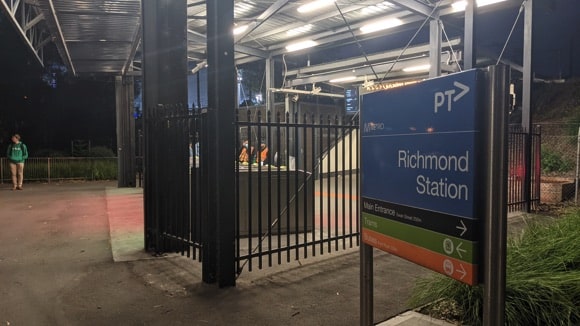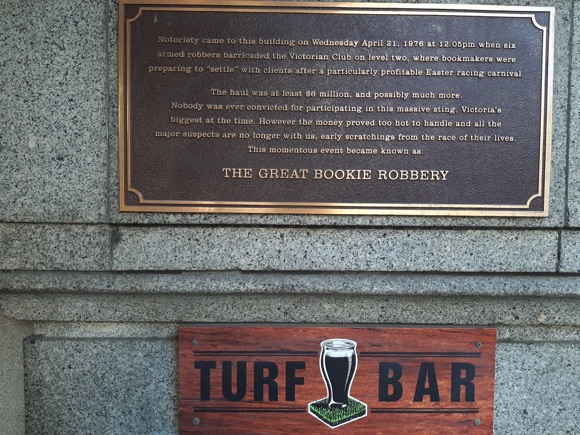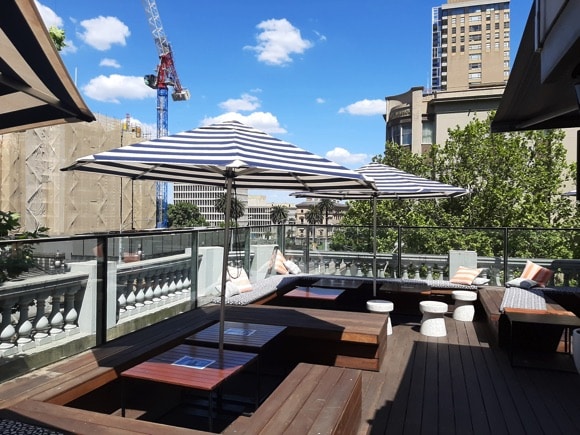Teams, tales and tips – a guide to the local game
Australia’s sporting capital, an Olympic city nearly half a century before Sydney, Melbourne is the home of the most supported club in the A-League whose name, navy blue colours and signature chevron V reflect the surrounding state of Victoria. Melbourne Victory attract 10,000+ for most home games, that home being the Melbourne Rectangular Stadium, officially known as AAMI Park.
Melbourne Victory women play at the purpose-built Home of the Matildas, opened in Bundoora on the eve of the 2023 Women’s World Cup co-hosted at AAMI Park.
Created as Melbourne’s A-League representatives for its big kick-off in 2005, Victory started out at the Olympic Park Stadium, built as a secondary venue for the 1956 Games, whose main events took place at the Melbourne Cricket Ground.
The legendary MCG, the largest sporting arena in the southern hemisphere, its current capacity now 100,000 from the 120,000+ of yore, centrepieces the city’s Sports and Entertainment Precinct, a three-park riverside complex whose pedigree can only be expressed by fantasy comparison. Imagine Wembley, Lord’s and Wimbledon all in one place, and that place was the South Bank, walking distance from the centre.



Dating back to 1853, the MCG may have staged cricket’s first Test match in 1877 but it was also here that legendary goalkeeper Lev Yashin first announced his arrival on the world stage by keeping a clean sheet for the winning USSR side against Yugoslavia in front of nearly 87,000 spectators to win Olympic gold in 1956.
Australia have also played vital World Cup qualifying games here, against Iran, Uruguay and Japan, before similar crowds. The Olympic Park Stadium, where Scotland held the Socceroos to a 0-0 draw to reach the 1986 World Cup Finals, was also a regular international venue until its demolition in 2011, replaced by AAMI Park nearby, purpose-built for rugby and soccer.
Since then, two more Melbourne clubs have joined the A-League and also use AAMI Park.
For Melbourne City, founded as Melbourne Heart in 2009 then taken over and rebranded by the City Football Group, controversially adopting the sky blue of Manchester City, AAMI Park is home. The derby between them can be fiery, violence often brought to the fore such as during the pitch invasion of December 2022.



Coming shortly after Australia’s men’s team had performed so heroically at the Qatar World Cup, the shocking scenes on 20 minutes were ignited by the controversial decision to host the next six A-League grand finals for men and women in Sydney thanks to a sponsorship deal with New South Wales.
Many City fans boycotted the 2023 final at Parramatta, and the subsequent heavy defeat to Central Coast Mariners. Their club, meanwhile, straddle two academy complexes, one in suburban Bundoora and a newer site at Casey Fields south-east of town, aiming to generate a wider supporter base. A mini-stadium of 4,000 capacity suits junior teams, the senior side used to four-figure gates at the AAMI.
In 2021, it was announced that the Bundoora centre, within La Trobe University, would become the Home of the Matildas, a year-round hub for elite training and preparation for major tournaments – although for the Women’s World Cup 2023, Australia’s women’s team was based in Brisbane.



The most recent local addition to the men’s A-League, Western United, have their roots in the western suburbs, where they plan to build the first self-owned soccer ground in the A-League. Due for completion in 2026, the Wyndham City Stadium in Tarneit will supersede temporary homes way further west in Geelong and significantly further north-west in Ballarat, both Kardinia Park (aka GMHBA Stadium) and the Eureka (aka Mars) Stadium otherwise mainly used for Aussie rules.
The rise of Western United generated another city rivalry, the Westgate Derby with Melbourne Victory often fraught and exciting. It also echoes the golden days of the post-war game when suburban sides formed by expat communities – the Greeks of South Melbourne, the Croats of Melbourne Knights, the Greeks of Heidelberg United, the Italians of Brunswick Juventus, the Maltese of Green Gully, the Macedonians of Altona Magic, the Greek Cypriots of Bentleigh Greens – provided a colourful local football scene.
They still do, six currently in the National Premier Leagues Victoria, one tier below the A-League. South Melbourne and the then Melbourne Croatia claimed five national titles in the 1990s, the Greeks edging the 1991 Grand Final on penalties before 21,000 at the Olympic Park.
During major soccer finals around the world, watching parties take place at Federation Square, scene of crazy scenes at silly o’clock as the Socceroos surpassed themselves at the 2022 World Cup.
Getting Around
Arriving in town and local transport


Melbourne ‘Tullamarine’ Airport is 23km (14 miles) north-west of the city centre, linked by SkyBus (A$22, A$36 return) to the city’s Southern Cross train station in town. Services run every 15mins, calling at Terminals 4, 3 and 1, then taking 30mins to reach town.
Buses arrive on the Spencer Street side of Southern Cross station (SXS) and leave from Bay 75, heading for Terminals 1 and 3.
A train line connected with the Southern Rail Loop is expected to be in place by 2028.
Maxi Cab Melbourne (+61 483 027 583) should charge around A$60-A$70 into town, depending on your destination.
SkyBus also operates a service from Avalon Airport, 50km (30 miles) south-west of the city, used for Jetstar budget flights from Sydney and the Gold Coast. Five buses a day run to Southern Cross station (A$25, A$47 return, journey time 1hr).
A taxi to Melbourne should cost around A$100-A$120 depending on your destination. Melbourne’s network of trams, buses and metropolitan trains runs on an integrated top-up ticket, myki. Within the Central Business District (CBD), trams are free to use, including the heritage service on the City Circle route.


For short-term visitors, the pay-as-you-go myki Money option is best. Fares are calculated at 2hrs (A$4.60) or Daily (A$9.20) in Zone 1, with other options for Zone 2 and combined.
All 6 metropolitan train lines serve Southern Cross and the city’s other main station of Flinders Street, one stop away. The next stop, served by 4 lines from Southern Cross and 5 from Flinders Street, is Richmond, near the Olympic Park complex and Melbourne Rectangular Stadium.
Regular tram 70 interlinks Flinders Street, the nearby Fan Festival at Federation Square – both within the fare-free tram zone – and Olympic Park a short hop away, including 7C-John Cain Arena/Melbourne Park, 7D-Olympic Boulevard and Richmond.
To reach the stadium in style, a water taxi or even a skippered boat can be hired down the Yarra to the Southgate Landing by Flinders Street station – or even as far the landing platform by the Rod Laver Arena in the Olympic Park complex for a set price of A$12 from Southgate Berth 4 when there’s a major event on.
Where to Drink
The best pubs and bars for soccer fans










In town, pubs and bars dot the Central Business District, the towering façades behind Flinders Street station. The Charles Dickens at 290 Collins Street is one of them, a major destination for TV sport, two huge screens broadcasting action ‘live and loud’. A dozen draught beers include London Pride, Hobgoblin and Tetley’s in this Anglo-style tavern.
Nearby on Little Collins Street, the Irish Times Pub does what it says on the tin, amid framed shirts of green and classic Guinness ads. Highlights on the serious bar menu are the Irish stew and beef & Guinness pie, of course, while live music rings out at weekends.
Over on Queen Street, the Turf Bar touts itself as ‘Melbourne’s premier’ place to watch sport, and it’s a fair shout – you can even book your own screen and sound. Weekday specials at A$20, chargrilled steak and crispy beer-battered fish & chips can be washed down with draught Matilda Bay Hazy Lager, Balter XPA or Asahi Super Dry.






Further by Melbourne Central station, the Central Lion Hotel broadcasts action from 20 screens while pool balls clack on several tables.
At the eastern end of the CBD, the other side of Melbourne Town Hall, The Crafty Squire on Russell Street is where local Arsenal and Manchester United fans convene to watch the game on a big screen – but many come here for the beer, produced by the only microbrewery in Melbourne’s CBD, including the flagship Highwayman Thrice Hopped Red Ale. An Aussie touch underscores the superior menu.
Further east, by Parliament, the Imperial Hotel on Bourke Street is known for its rooftop bar, where a jumbotron screen is set up for major sports events. With a 24-hour licence, games are shown on three floors in fact, walk in for Premier League action early morning, book at a table for night-time fixtures. A favourite with Liverpool, Spurs and Manchester City fans.






